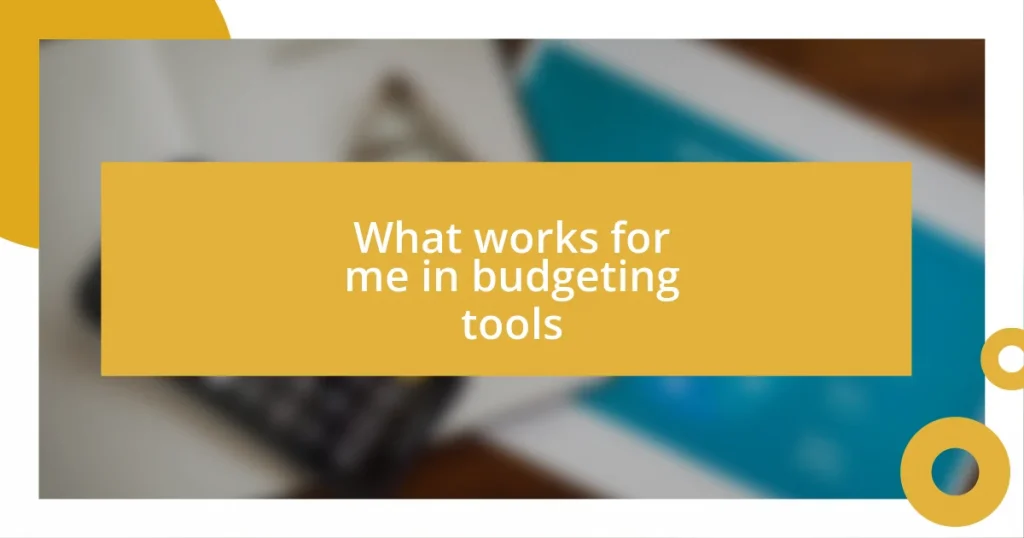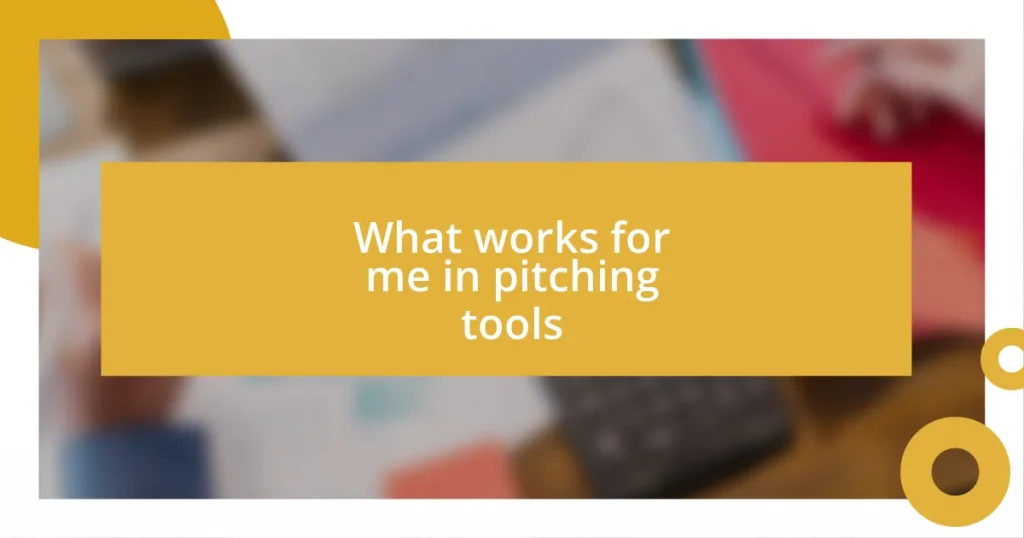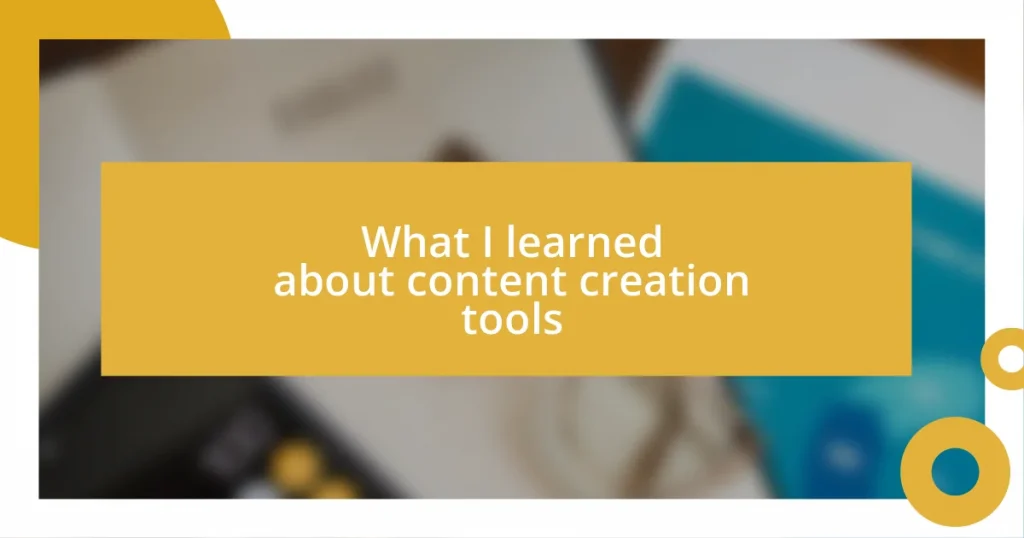Key takeaways:
- Co-investment opportunities allow investors to pool resources, offering larger stakes and potential returns, but require trust and thorough due diligence to mitigate risks.
- Building a co-investment network involves intentional networking, leveraging existing connections, and creating synergies through shared expertise, enhancing collaboration and opportunities.
- Effective negotiation and ongoing monitoring of investments are crucial; transparent communication and the use of technology strengthen partnerships and facilitate better decision-making.

Understanding co-investment opportunities
Co-investment opportunities represent collaboration between investors to pool resources for a particular investment project, often in private equity or venture capital. I remember my first experience diving into a co-investment deal; it felt like stepping onto a rollercoaster ride, full of excitement and a touch of apprehension. You might wonder, how do you find the right partners for such ventures?
These opportunities allow individual investors to take larger stakes than they could on their own, potentially leading to significant returns. During my journey, I’ve often questioned the trust factor behind co-investment; I learned that thorough due diligence is key. When I teamed up with a group of experienced investors for a tech startup, I felt reassured knowing we shared a common goal and expertise.
Navigating co-investments can evoke feelings of uncertainty, but the rewards often outweigh the risks. What if I hadn’t taken the plunge? I cringe to think of the potential opportunities I would have missed. So, engaging in these collaborations not only expands your portfolio but also enriches your investment knowledge through shared insights and experiences.

Identifying potential investment partners
When it comes to identifying potential investment partners, the first thing I consider is networking within my industry. I’ve found that attending conferences and meetups not only broadens my knowledge but also opens doors to connect with like-minded investors. Each conversation can spark ideas and lead to discovering who shares your investment philosophy, which is crucial for a successful partnership.
Here are some key strategies to help identify the right investment partners:
- Leverage Professional Networks: Tap into connections from business associations or LinkedIn groups.
- Research Investment Backgrounds: Look into potential partners’ previous investments to gauge their experience and interests.
- Engage in Direct Outreach: Don’t hesitate to reach out to individuals whose work you admire; a simple message can yield surprising opportunities.
- Assess Compatibility: Take the time to understand their investment strategies and risk tolerance to ensure alignment.
- Utilize Referrals: Ask colleagues or mentors for recommendations; personal endorsements often carry weight.
In my own experience, reaching out to a former colleague led to an unexpected partnership opportunity. We had casual catch-ups that gradually evolved into discussing potential co-investments, turning acquaintances into trusted partners. That connection solidified my belief that genuine relationships can be the stepping stones to fruitful investment collaborations.

Evaluating investment strategies
Evaluating investment strategies is crucial in the world of co-investments. For me, it’s always been about balancing potential returns with associated risks. I recall evaluating multiple strategies while considering an investment in renewable energy. The deeper I delved, the more I appreciated having a clear understanding of not just the financial metrics, but also the broader market trends and environmental impact. This comprehensive approach often leads to more informed decisions.
Additionally, I’ve learned to compare various strategies using a systematic approach. It’s like going through the essentials of a recipe before cooking; knowing what works best in various situations can truly make a difference. I often create a comparison table to visualize my options, assessing factors such as expected returns, risk levels, and the time commitment involved. This method not only simplifies my evaluation but also allows me to present it to my partners for further discussion.
To illustrate the importance of evaluating strategies effectively, here’s a simple comparison of two investment strategies I’ve considered:
| Strategy | Details |
|---|---|
| Growth Equity | Targets high-growth companies, typically higher potential returns, but often accompanied by significant risk. |
| Income Investments | Focuses on generating consistent cash flow, generally lower risk, but with moderate returns compared to growth equity. |

Conducting thorough due diligence
Conducting thorough due diligence is the backbone of securing a solid co-investment opportunity. I remember the first time I was about to invest in a tech startup; I spent hours poring over their financials, scrutinizing every line. That meticulous attention to detail paid off when I uncovered inconsistencies that would have otherwise led to a substantial monetary loss. Isn’t it fascinating how a few extra hours of research can alter the course of an investment?
In my experience, due diligence isn’t just about the numbers; it involves digging deeper into the management team and their track record. When assessing a potential partner, I always look for red flags in their past ventures. One time, I found that a promising entrepreneur had a history of failed startups without clear lessons learned. It made me question their resilience and adaptability. If I hadn’t researched their background, I might have overlooked critical insights into their capabilities.
I also believe that due diligence should extend beyond financial statements. Engaging in conversations with previous investors can reveal vital qualitative aspects. Just recently, I chatted with an investor who had exited from a similar project. His insights into the management’s transparency and work ethic were invaluable. It made me wonder: how often do we rely solely on data without appreciating the human element behind it? Balancing both perspectives is essential for making informed and wise investment decisions.

Building a co-investment network
Building a co-investment network can feel a bit like assembling a puzzle. I’ve experimented with various approaches, from attending industry conferences to engaging with online investment forums. One memorable moment occurred when I met a fellow investor at a sustainability summit; we immediately connected over shared values and visions, and that chance encounter eventually led to a fruitful co-investment in a green tech firm. Isn’t it remarkable how just one conversation can spark a collaboration?
It’s also important to cultivate relationships intentionally. When I reach out to potential partners, I focus on what we can offer each other. For instance, after realizing my expertise in tech investments could complement a friend’s knowledge of consumer goods, I suggested we collaborate on a project. The synergy was palpable, and soon we were delving into opportunities together. Do you see how nurturing such partnerships can open doors to new ventures?
Lastly, leveraging existing connections has proven invaluable. I often host informal meetups with like-minded investors to exchange ideas and opportunities. These gatherings not only strengthen relationships but provide a perfect platform to discuss potential projects. I remember one meeting where we uncovered a shared interest in a blockchain startup, which eventually led to a successful co-investment. What about you — have you considered the power of your existing network in co-investment opportunities?

Negotiating co-investment terms
Negotiating co-investment terms is often a dance of give-and-take, and I’ve learned that clear communication is crucial throughout the process. I remember negotiating a deal where I needed specific assurances on exit strategies. The moment I articulated my concerns about liquidity, I could feel the tension ease; it was a sign that my prospective partner valued transparency too. Have you ever noticed how acknowledging each other’s worries can shift the entire tone of negotiations?
In one particularly memorable instance, we agreed on a revenue-sharing model that reflected both parties’ interests. I proposed a tiered approach, where the percentage would adjust based on performance milestones. This not only incentivized both sides to strive for success but also solidified our partnership, reinforcing trust and collaboration. It truly made me realize how aligning financial incentives can lead to a more robust co-investment experience. Have you considered how creative terms can enhance mutual benefits in your deals?
On another occasion, I faced a negotiation where the other party was initially resistant to my proposed terms. Instead of pushing back aggressively, I took a moment to listen to their reasoning. In doing so, we discovered common ground around risk-sharing, leading to a compromise that satisfied both of us. It left me pondering: how often do we jump into defending our stance without fully understanding our partner’s perspective? Creating a dialogue opens up possibilities you might not have previously considered, fostering a more effective negotiation environment.

Monitoring and managing investments together
Monitoring and managing investments together is a dynamic aspect of co-investment. I recall a time when a fellow investor and I set up regular check-ins to assess the performance of a startup we had both backed. This ongoing communication allowed us to pivot our strategies quickly as market conditions changed, something I found incredibly empowering. How often do you think sharing insights can lead to better decision-making?
Being open about challenges can lead to unexpected solutions. During one of our discussions, my partner admitted they were concerned about the startup’s cash flow. Instead of brushing it off, I shared my own worries, and together, we brainstormed potential adjustments. That moment made me realize that vulnerability in these conversations can actually strengthen our collaboration. Have you considered the benefits of transparency in your co-investment relationships?
I’ve also learned that utilizing technology can be a game-changer for managing our investments. We started using a shared dashboard where we could track performance metrics and updates in real-time. This not only streamlined our management but fostered a sense of shared responsibility over our investment’s success. What tools have you adopted to enhance the collaborative aspect of your investments?















